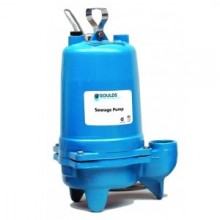-
Inspector Pumphead’s Video Classroom: How To Read a Pump Curve Chart
December 18, 2017Welcome back to another exciting edition of Inspector Pumphead's Video Classroom! In this feature, I, Inspector Pumphead, will tackle a common question about pumps, parts or water systems using fun visual aids. This video is designed for those who like visual learning or enjoy a bit of fun in the classroom! In today's feature, my assistant Mike, will explain how to read a pump curve chart. The pump curve is something you should be able to find in the corresponding literature for any pump we sell. It is simply a visual representation of the pump's performance. The graph may be confusing or intimidating to those who don't consider themselves technically savvy, but fear not! This isn't a replay of calculus; curves are actually pretty simple to read. The above video will discuss the most basic type of curve which identifies pump performance through two variables: flow rate (or capacity) and total dynamic head. Those are the two basic things you need to know to identify what pump goes with your system. In the above example, Mike uses a curve from a Goulds WW05 3872 sewage pump. For those of you that like a written guide to go with your videos, read on below for a repost of a previous blog about pump curves. It goes into a little more detail and talks about more advanced curves as well. A Pumphead Classic all right! A common question that customers ask Pump Products application engineers is, "What am I looking at" in reference to the pump curve charts you can often find in technical manuals and brochures. The pump curve is simply a visual representation of the conditions in which the pump ca n operate. At the most basic level the relationship between flow (plotted on the x-axis) and head (y-axis) is displayed. Thus, if you know the total dynamic head capability of the pump, you can easily determine how many gallons per minute the pump can move. Knowing how to read a pump curve chart can help you pick the most efficient pump for your application, keep that pump running in optimal condition, and ensure a long operating life. If you need to replace a pump, the information can also help estimate flow rates for an existing system. Put simply, understanding the information on a pump curve chart can save you time, money, and a lot of maintenance effort in the long run. In this blog post, we will walk you through reading a basic flow-head curve and give a primer on reading more intermediate and advanced curves as well. (more…)






